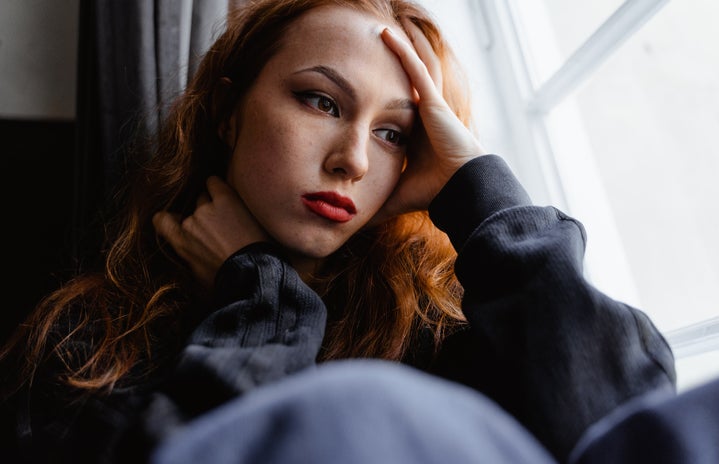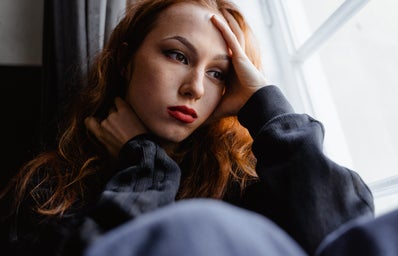This year as I sat down to watch shows like “The Bachelor” or “Love is Blind,”I was stunned by the amount of lip filler and Botox that many of the women had. It was clear that many if not all the contestants on these shows have had some kind of work done. While of course they are all still beautiful and deserve to do whatever makes them confident and happy, it was upsetting to see yet another largely unattainable beauty standard be broadcast across television. In recent years, Botox and lip filler have become a sort of epidemic, becoming increasingly popular among younger women. Even walking across a college campus, it is hard to ignore the many people who have some kind of filler. I have found myself wondering if there is a reason why this phenomenon has spread into younger generations and what shift in our society has caused this change. Keep reading if you want to explore the conditions which have allowed this epidemic of sorts to erupt across the country.
First introduced in 1989, Botox has been a highly sought after tool to freeze one’s face in time and prevent the dreaded inevitable that is aging. Our society is so obsessed with perpetual youth, it criticizes wrinkles and beautiful things like smile lines or stretch marks, all signs of a life well lived. Women especially have been taught that much of their worth lies in their beauty and their youth. We yearn for smooth, hairless skin, rosy cheeks and just the right facial structure in our desire to be accepted in society and celebrated for our beauty. However, what society fails to recognize is that women are humans, we are not dolls who never change. We grow body hair and get stretch marks, we laugh and smile, we grimace and frown, we have all the hallmarks that make us perfectly imperfect humans. And yet we have never been able to accept these flaws. And so, Botox was released and people everywhere went wild for a chance to freeze in time and avoid any signs of aging.
While Botox has a multitude of other uses outside of cosmetics, much of its success and popularity can be attributed to its ability to enhance one’s beauty. In 2006, an episode of “The Real Housewives”aired in which some of the housewives received Botox. Two decades ago, this therapy was often viewed as reserved for only the wealthy and was not a standard by any means due to its high price point. However, the popularity of the procedure has since increased exponentially. In the last year, 7.4 million Botox procedures were performed, which is an 845% increase from the year 2000. This immense rise is especially prominent among younger women between the ages of 19 and 34 among which there has been a 41% increase in the use of the procedure since 2011. This rise among young people is no mere coincidence. This is a deliberate marketing ploy by cosmetic, pharmaceutical and plastic surgery companies who profit from these women.
Many magazines and commercials advertise Botox specifically to young people claiming they need to start now to see better results in the future. Fueled by the fear of looking aged, this lie draws many people into plastic surgery offices where they pay $300 and $400 a session. The injectables do not last forever, in fact they are only good for about four to six months before you start seeing wrinkles again. In addition, while Botox is generally safe to use as the procedure has been widely studied and approved by the FDA, there are still some risks. When you go to get Botox, you are being injected with a neurotoxin, more specifically the botulinum toxin. If used by a trained medical professional, the side effects are mostly small and reversible. However, if it is provided by an unlicensed provider, the side effects can be life threatening, making the $300 price tag worth it if you get Botox. The toxin works to freeze the muscles in your face. If you can use muscles needed to frown or smile, you can’t get smile or frown lines. However, once the toxin starts to wear off, these wrinkles start to appear again, which often results in another visit to get Botox. The industry has formulated a lie to draw young people in, spend money and get them addicted to a wrinkle free face, preying on their fear of inadequacy and desire to meet societal standards. It is no wonder Botox has done so well in recent years.
While this rise in cosmetic procedures is mostly harmless on an individual basis, it may prove to have some serious societal side effects down the line. Primarily, the mass use and rise in popularity of the procedure continues to set beauty standards further and further out of reach for the average woman. Some Botox is subtle and even when it’s not, if people are not forthcoming about their use of the procedure, it makes others assume that this level of beauty is natural and just something they will forever fall short of. Furthermore, even if it is noticeably Botox or lip filler enhancing one’s face, many people cannot afford this luxury. Hundreds of thousands of people are struggling to buy groceries every week so adding this additional standard, which can be achieved with a $10/month gym subscription or cutting out fast food, we create a division among social classes in which those with less money cannot be as beautiful. Of course, this is not actually true, and one does not need lip filler to be beautiful, seeing every single person on social media and TV with cosmetic alterations can easily make someone who can’t afford this feel less than. It is important to note that this is not a consideration that individuals need to worry about when they choose to get lip filler. If that is a decision you choose to make and you have the money to do so, then by all means do what feels best for you. Rather this exacerbated division of socioeconomic class based on your ability to undergo these procedures is a reflection on our society and the beauty industries desire to put us down and separate us rather than unite us and celebrate our unique beauty.
Not only can this Botox epidemic have long term side effects on a societal basis, but it is possible that it can create long term side effects individually. There is not a large amount of data on the side effects of long-term use of Botox. This is because of how recently it has become popular, and we have never seen quite so many young people getting Botox and continuing to do so throughout their lifetime. This may or may not have adverse side effects, we just do not know. This past year, people were buzzing about a picture of Kylie Jenner looking older and not like herself with many hypothesizing her looks were due to repeated filler use and migrating filler. Additionally, people like Simon Cowell are often called out as not looking like themselves because of the number of cosmetic procedures they’ve had done. Of course, these are considerations that should be weighed out by individuals when deciding to move forward with filler. It is not to say cosmetic injections always look bad down the road but it’s definitely something to keep in mind that there just isn’t a lot of data on Botox in the long term.
The amount of people, specifically young women, who are seeking out cosmetic injections is the highest it’s ever been. This rise reflects how society preys on young women and their insecurities or the want to be desirable. Botox and other cosmetic procedures can be empowering and be used to build someone’s confidence in a way that nothing else could. However, as an industry, it tends to be predatory, further amplifying differences in socioeconomic classes and women in general, adding fuel to the idea that women are always in competition with each other. As a society, and as women, it is essential to celebrate everyone and their beauty as special and uniquely individual. If someone wants to get lip filler, support them, but if someone chooses not to or cannot afford it, it is important that they are not treated any differently. It is important to be aware of the motives of the cosmetic and plastic surgery industry to work against them within our own communities both on social media and in real life.


